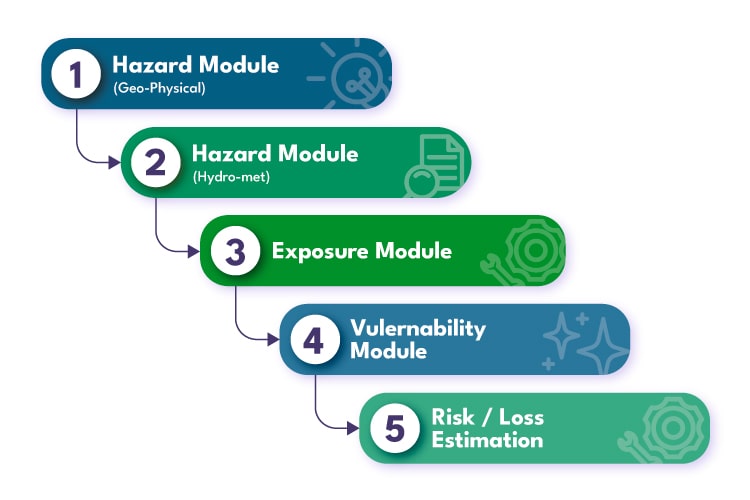Background
- The failure of governments to suitably prepare people for these hazards is a root cause of disaster. No matter the severity of the event, a disaster can be avoided. Framing natural hazards as a “natural disaster” deflects from the reality that vulnerability must exist before a crisis can emerge.
- Climate change, poor land use practices, and forest and land degradation are exacerbating risks, especially the risk of hydrological hazards. The frequency and intensity of disasters is pushing the resilience and recovery capacity of communities, governments, and institutions to the limit. Climate change is now expected to increase disasters and lead to greater destruction in the future, with potentially profound implications.
Multi-hazard Risk Assessments and Cat Modelling of Pakistan
Every country has unique characteristics that can affect the likelihood and impact of natural disasters. By conducting country-specific risk assessments and catastrophe modeling, policymakers and disaster management authorities can tailor their responses to local conditions and develop effective strategies for disaster preparedness, response, and recovery.
Country-specific risk assessments and catastrophe modeling enable accurate risk assessment of natural disasters. By analyzing historical data, demographic information, and geographic features, catastrophe models can provide insights into the likelihood and severity of natural disasters in a particular country. This information can be used to develop effective disaster risk reduction and management strategies.
Country-specific risk assessments and catastrophe modeling can help in better preparedness for natural disasters. By understanding the risks associated with different types of disasters, governments and disaster management authorities can develop emergency response plans, allocate resources, and conduct regular drills to ensure that they are ready to respond in case of a disaster
Country-specific risk assessments and catastrophe modeling can also help insurance companies to provide better coverage to the people of the country. By accurately assessing the risks associated with natural disasters, insurance companies can develop appropriate products that provide comprehensive coverage to people in the high-risk areas.
Country-specific risk assessments and catastrophe modeling can help in investment planning for disaster risk reduction and management. The information obtained from these assessments can help governments and development partners to identify high-risk areas and prioritize investments in DRR measures.
Natural Catastrophe (Nat Cat) Modelling by SUPARCO - Pakistan
Nat-Cat Modelling - Scope of Work - SUPARCO
a) Development of a national spatial geo-referenced GIS dynamic database of public and private assets and infrastructure (agriculture, livestock, infrastructure, buildings, etc.) and associated physical vulnerability to different types of natural hazard of varying intensity and reconstruction costs.
b) Probabilistic disaster risk modeling and assessment for the quantification of the risk posed by:
geophysical hazards (earthquake)
hydro-metrological hazards (floods, droughts and tropical cyclones)
c) Capacity development of government staff in the collection, generation and utilization of exposure and disaster risk data and preparation of related protocols and manuals.
d) Development of an accessible, sustainable data platform, supporting use of the exposure and risk data by all relevant stakeholders.











